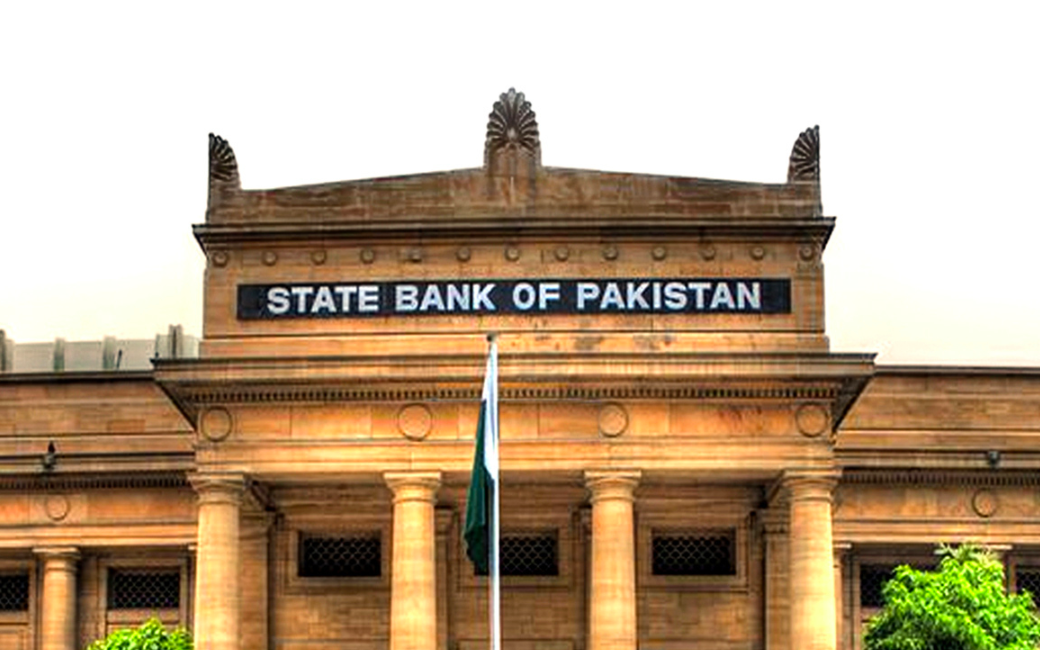The State Bank of Pakistan (SBP) is the central bank of Pakistan, responsible for formulating and implementing monetary policy, regulating the financial system, and ensuring the stability of the country’s economy. Here’s a detailed description:
1. Overview
- Established: July 1, 1948
- Headquarters: Karachi, Pakistan
- Governor: The SBP is led by a Governor, appointed by the Government of Pakistan.
- Ownership: Fully owned by the Government of Pakistan.
2. Functions of the State Bank of Pakistan
The SBP performs several critical functions as the central bank of Pakistan:
A. Monetary Policy Implementation
- Regulates the supply of money to ensure price stability and economic growth.
- Uses tools like the discount rate, open market operations, and reserve requirements to control inflation and liquidity.
B. Issuance of Currency
- Sole authority to issue Pakistan’s currency, the Pakistani Rupee (PKR).
- Ensures that the currency is stable, reliable, and secure.
C. Regulation of the Banking Sector
- Supervises and regulates commercial banks, microfinance institutions, and other financial entities.
- Ensures the stability and efficiency of the banking system.
D. Management of Foreign Exchange
- Maintains and manages the country’s foreign exchange reserves.
- Regulates the foreign exchange market to stabilize the PKR against foreign currencies.
- Implements foreign exchange policies and oversees remittance inflows.
E. Development Role
- Facilitates the growth of Pakistan’s financial and industrial sectors.
- Promotes financial inclusion by supporting microfinance and small and medium enterprises (SMEs).
- Advances digital banking and payment systems.
F. Lender of Last Resort
- Provides financial assistance to banks in times of liquidity crises to ensure the stability of the financial system.
G. Public Debt Management
- Manages the government’s domestic and external debt.
- Works closely with the Ministry of Finance to issue government securities and bonds.
H. Financial Literacy and Inclusion
- Promotes awareness of financial products and services to increase financial inclusion.
- Implements programs for underserved segments like women and rural populations.
3. Monetary Policy Committee (MPC)
The SBP’s Monetary Policy Committee formulates monetary policy to achieve:
- Price Stability: Controlling inflation levels.
- Economic Growth: Supporting policies that foster sustainable growth.
The MPC considers factors such as inflation, exchange rates, and fiscal policies before making decisions.
4. Key Initiatives of the State Bank of Pakistan
- Digital Payments and Fintech: Promoting cashless transactions through the launch of systems like Raast, Pakistan’s instant payment system.
- Roshan Digital Account: Enabling overseas Pakistanis to invest and access banking services remotely.
- Green Banking: Supporting environmental sustainability through financing renewable energy projects.
- Housing Finance: Introducing schemes to promote affordable housing in Pakistan.
5. Financial Inclusion
The SBP has taken significant steps to expand access to financial services:
- Branchless Banking: Encouraging mobile banking and agent-based models.
- Women’s Financial Inclusion: Launching initiatives to close the gender gap in financial access.
6. Foreign Exchange Management
- Monitors currency exchange rates and balances the external sector.
- Ensures smooth remittance inflows from Pakistanis abroad, a critical component of the economy.
7. Governance and Transparency
The SBP is governed by:
- Board of Directors: Oversees the bank’s functions and ensures alignment with national policies.
- Governor: Leads the bank’s management team and represents the SBP in international forums.
8. Challenges Faced by SBP
- High Inflation: Managing inflation while fostering economic growth.
- Currency Depreciation: Stabilizing the rupee in the face of external pressures.
- Debt Management: Balancing domestic and international borrowing.
- Low Reserves: Maintaining adequate foreign exchange reserves amidst fluctuating imports and exports.
9. Achievements
The SBP has played a pivotal role in:
- Developing a robust banking system.
- Introducing innovative solutions like real-time gross settlement (RTGS) for efficient fund transfers.
- Strengthening Pakistan’s financial stability during global economic crises.
10. Future Outlook
The SBP is focused on:
- Expanding digital banking and fintech.
- Enhancing transparency in governance.
- Supporting green finance initiatives.
- Strengthening economic resilience through robust monetary and fiscal policies.
